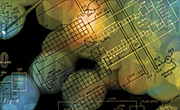
ITC Refuses to Stay Investigation Pending Inter Partes Review
The International Trade Commission ("ITC") has never granted a stay of a Section 337 investigation in favor of an American Invents Act inter partes review ("IPR") at the U.S. Patent and Trademark Office ("USPTO"). That trend continued last week when Administrative Law Judge Shaw refused to stay an investigation even though the USPTO instituted an IPR proceeding on two of the three asserted patents before the Section 337 complaint was filed at the ITC.[1] The ALJ's Order confirms that it is highly unlikely that a Section 337 proceeding will be stayed pending the completion of an IPR.
The Case
On December 15, 2015, complainant Energetiq Technology, Inc. filed a complaint at the ITC alleging that respondents ASML Netherlands B.V., ASML US, Inc., and Qioptiq Photonics GmbH & Co. KG violate Section 337 by importing products that infringe three of Energetiq's patents: U.S. Patent Nos. 8,969,841, 9,048,000, and 9,185,786. Fifteen days prior to Energetiq's filing, on November 30, 2015, the Patent Trial and Appeal Board ("PTAB") held that there is a reasonable likelihood that the '841 Patent and the '000 Patent are invalid and instituted IPR proceedings.[2] The third asserted patent, the '786 Patent, is a continuation of the '000 Patent and did not issue until November 10, 2015—seven months after the IPR petitions were filed against the '841 and '000 Patents.
Immediately after institution of the Section 337 investigation, the respondents moved for a stay pending completion of the IPR proceedings. Citing the Commission's statutory mandate that it conclude Section 337 investigations "at the earliest practicable time,"[3] the ALJ analyzed the facts under the ITC's five-factor test for determining whether to grant a stay: (i) the state of discovery and the hearing date; (ii) whether a stay will simplify the issues and hearing of the case; (iii) the undue prejudice or clear tactical disadvantage to any party; (iv) the stage of the PTO proceedings; and (v) the efficient use of Commission resources.[4]
With regard to the state of discovery and the hearing date, while acknowledging that the investigation was in the earliest stage of discovery and that the IPR proceeding would conclude before the target date, the ALJ held that the IPR proceedings provide no reason to stay the ITC investigation. The ALJ reasoned that the evidentiary hearing in the ITC case would occur prior to the final determinations in the IPR proceedings and that any insight gleaned from the IPR proceedings could be integrated into the investigation after the hearing.[5] Citing to the different claim construction standard in an IPR versus the ITC[6] and the inability to address in an IPR questions of indefiniteness under 35 U.S.C. § 112 or to consider prior art devices that are not printed publications, the ALJ similarly held that a stay would not simplify the issues and hearing of the ITC case.[7] This was especially true where one of the asserted patents was not in an active IPR proceeding.[8] The ALJ also held that a stay would be prejudicial to the complainant as it would allow the respondents to continue to import possibly infringing products and that "any importation of infringing merchandise derogates from the statutory right, diminishes the value of the intellectual property, and thus indirectly harms the public interest."[9] Finally, the ALJ stated that the stage of the IPR proceeding and use of Commission resources weighed against granting a stay, reasoning that "[t]he IPR proceedings will be far enough along such that any insights that emerge can be incorporated into this investigation," and that the most efficient uses of Commission resources are to adjudicate the issues that will not be heard in the IPR proceeding.[10]
Key Takeaway
The ITC remains an attractive venue to obtain swift adjudication of intellectual property rights, especially when contrasted with district courts' willingness to grant stays pending the completion of IPRs. Given ALJ Shaw's reasoning that the ITC can adjudicate more issues using a different standard than can be addressed in an IPR, and the fact that the IPR was instituted prior to the filing of the ITC complaint, it appears unlikely that the ITC will grant a stay of a Section 337 investigation in favor of IPR proceedings.
Lawyer Contacts
For further information, please contact your principal Firm representative or one of the lawyers listed below. General email messages may be sent using our "Contact Us" form, which can be found at www.jonesday.com/contactus/.
Blaney Harper
Washington
+1.202.879.7623
bharper@jonesday.com
Vishal V. Khatri
Washington
+1.202.879.3607
vkhatri@jonesday.com
David M. Maiorana
Cleveland
+1.216.586.7499
dmaiorana@jonesday.com
Richard Fieman
Washington
+1.202.879.3856
rfieman@jonesday.com
Jones Day publications should not be construed as legal advice on any specific facts or circumstances. The contents are intended for general information purposes only and may not be quoted or referred to in any other publication or proceeding without the prior written consent of the Firm, to be given or withheld at our discretion. To request reprint permission for any of our publications, please use our "Contact Us" form, which can be found on our website at www.jonesday.com. The mailing of this publication is not intended to create, and receipt of it does not constitute, an attorney-client relationship. The views set forth herein are the personal views of the authors and do not necessarily reflect those of the Firm.
[1] Certain Laser-Driven Light Sources, Subsystems Containing Laser-Driven Light Sources, and Products Containing Same, Inv. No. 337-TA-983, Order No. 8 (March 3, 2016) ("Certain Laser-Driven Light Sources").
[2] See ASML Netherlands B.V. vs. Energetiq Technology, Inc., Docket No. IPR2015-01362, Decision on Institution, (P.T.A.B. Nov. 30, 2015); ASML Netherlands B.V. vs. Energetiq Technology, Inc., Docket No. IPR2016-01375, Decision on Institution, (P.T.A.B. Nov. 30, 2015).
[3] 19 U.S.C. § 1337(b)(1).
[4] Certain Laser-Driven Light Sources at 5, citing Certain Semiconductor Chips with Minimized Chip Package Size and Products Containing Same, Inv. No. 337-TA-605, Comm'n Op., 2008 WL 2223426, at *2 (U.S.I.T.C. May 27, 2008).
[5] Id.
[6] See 37 C.F.R. § 42.100(b) (IPR claim construction standard is "broadest reasonable interpretation"). Section 337 investigations adjudicate investigations with the same Phillips standard used in federal courts.
[7] Certain Laser-Driven Light Sources at 6-7.
[8] Id.
[9] Id. at 7-8.
[10] Id. at 8-9.




